how modigliani did it?
A COMPLETE HOW
 I'll try to keep it simple to make it easy
I'll try to keep it simple to make it easy---------------------------------------------------
So, how he did it: We require to have in mind that he was a great artist so his hand and his ability to conceptualize the subject is in my personal opinion supreme. Many experts talk about primitivism, African and other aspects but just a simple view to his origins show he was doing what he learned when child, his native "grandiosità". OK Cycladic and African art may be a reference but his gesture, his style his intentions are far away from the hieratic art from ancient or African cultures he is searching for the same as his masters. A complete expression and feeling.. ( As an example, when Picasso paints the young ladies of Avinyo, who are prostitutes in a brothel on Avinyo Street in Barcelona, he does not paint their faces, only the mask used to dehumanize them. Modigliani does the opposite even in the lesser expressive works, the mask provides human expression) Then we can go to the how's and methods he used to paint that are totally Italian. 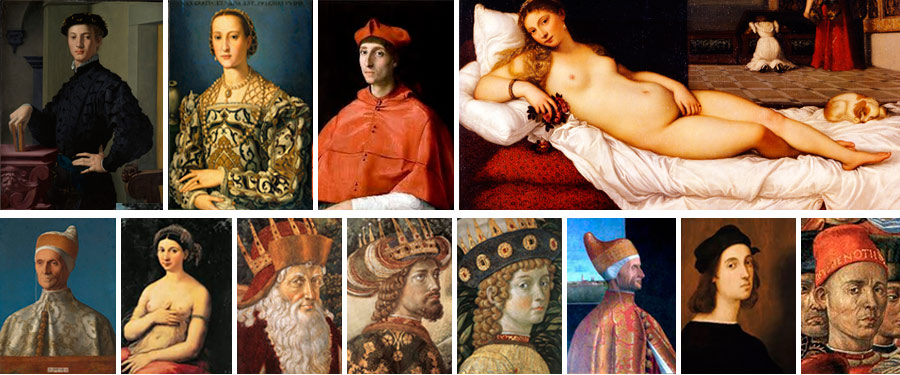 To discover how we have to use a little science and this is harder to explain without examples of what an IR or X ray are: Infrared photo (IR): 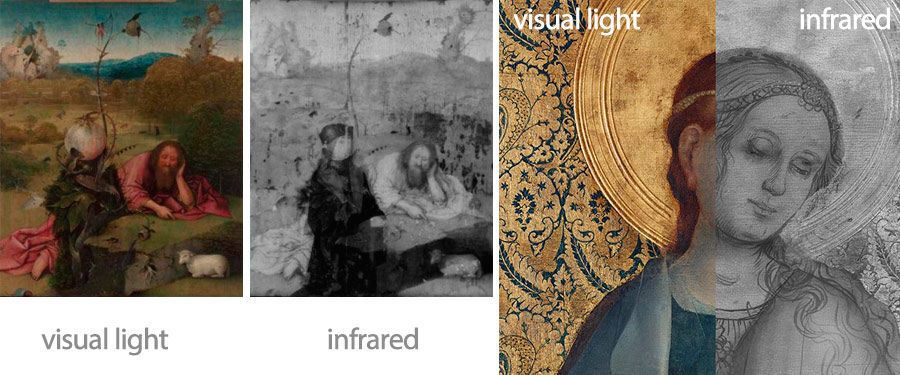 IR allow us to see the main trace done previously to painting, the sketch in the canvas or cardboard (the drawing). the drawing in Modigliani paintings is usually as in paper, clear, concise and secure. This does not mean that we are not going to find corrections (pentimento) or changes in later stages of the work but in the overall his sketches in the canvas are always searching for the golden ratio. X-ray: 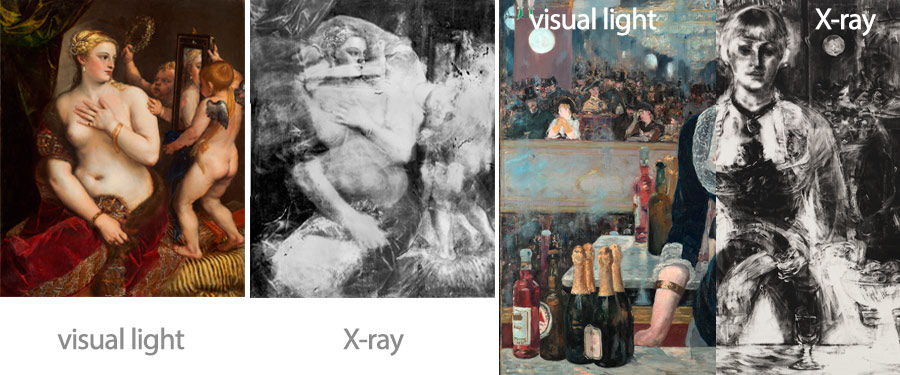 X-ray allow us to see how he masterfully fills the color and uses the mix of painting while fresh in the canvas, from the X-ray we can determine how he painted in a session and repainted in a later stage what he done the day before, it goes much more detailed than the IR and penetrates deeper. -------------------------------------------------------------------------------------------------------------------------------------------------------------------------------------------------------------------------------------------------------------------- So using this 2 tools (IR + X-ray) and the common eye we can see step by step how he did his paintings, as always art is not attached to boundries so have in mind this is not a law, what he have done in one painting does not need to be found in the rest, it was his method to achieve something but he evolves and changes his method while he grows as an artist. -------------------------------------------------------------------------------------------------------------------------------------------------------------------------------------------------------------------------------------------------------------------- I will keep it simple to make it understandable: 1.- he cuts a canvas or cardboard using a stretcher as model, this is why many of his paintings present lines in the borders, easier to transport 10 paintings in a big roll than to transport 10 paintings in stretchers. (Many works are made in canvases already done so we dont find lines, this is art not industrial production)  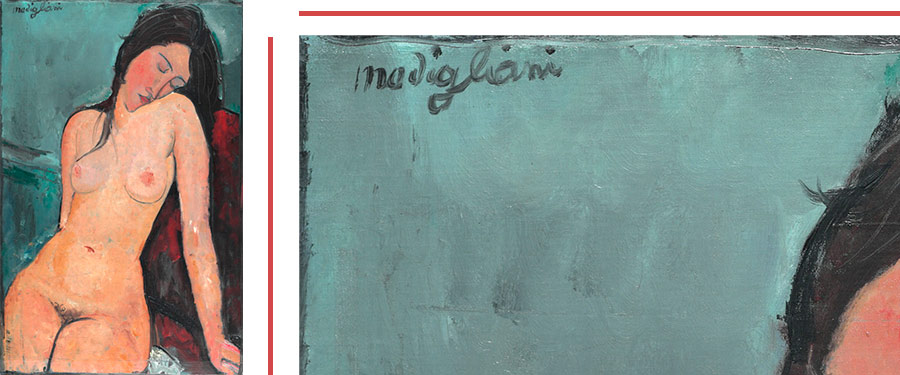 2.- He nails the canvas/cardboard to a wall or a wood to work over the pre cut piece, this is the reason why so many of his paintings present holes in the corners, some visible, others covered. (Many works are made in canvases already done so we dont find holes, again, this is art not industrial production)  3.- He does a sketch in pencil, charcoal or diluted oil, blue, ochre, gray, black, etc. mainly a dirty color that comes from spare painting mixed, to save oils. (Oil paints were very expensive and therefore nothing was wasted, although they were industrial, there were only a few suppliers and therefore their production of each color was short and pre-industrial, you can differentiate the composition of a Prussian blue from the producer X to that of producer Y during the 20's but after the 1930s this can no longer be done) 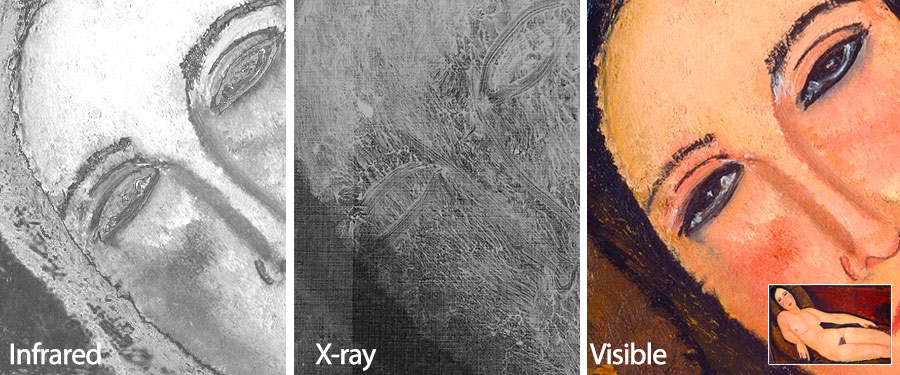 4.- He fills the color like in painting by numbers respecting the line in the areas he wants to achive a determined aspect. This can have variations, it goes where suits the composition, this is not a rule is just a method to achieve a final look.  5.- He works background using a very vivid brush play, the brush play is similar in many paintings but is not fixed, it goes where suits the composition, this is not a rule is just a method to achieve a final look. (Some experts seek to always find the same brushstrokes in certain places, usually common in certain areas, but it does not always occur, as in all art it is not subject to laws and therefore if at a certain time it was convenient to put the paint swirl on the right, instead of the left he did it ...)  6.- Once the background is finished he returns to figure working on the details using color veils sometimes and other he covers the line but sometimes not. Usually in this stage the eyes change. (At this stage he usually works on the eyelids and other small details of the expression such as eye bags, the volume of the face, the depth of the ears, etc.)  7.- Once the details are ready he can rework on areas of the background or small details. But this is art so it is not attached to laws, it all depends on the task. (In some paintings we find a much more elaborate background, much richer in details with shading and more depth, while in others it is left as is, showing the cardboard or the texture of the canvas)  8.- Now in some paintings he recovers the lost line areas or add details like the ears color or the inner eyes details, inner lines, eyebrows, lashes. Or he does not and leave them as they are. (We can find almost perfect eyes or eyes reduced to a simple sketch, sometimes it eliminates the line that connects the nose to the eyebrow and others leaves it visible, it all depends on the moment. In art there is a point where the artist decides that the goal is already achieved.)  9.- Finally and depending on the subject he gives a varnish coating to achieve a desired aspect but not in all of them, only in his interested style. For example, in his nudes we find dense varnish layers in which he sought to achieve the same Venetian light that inspired Titian and the great Venetian masters that he admired, that is why it is always so controversial to touch his nudes since a bad restoration can remove not only the varnish obscured by time, but also the glazes that give volume to the bodies and without them ruin the composition (But we also find works with direct paint, without varnishes of any kind, this is art and has no rules) 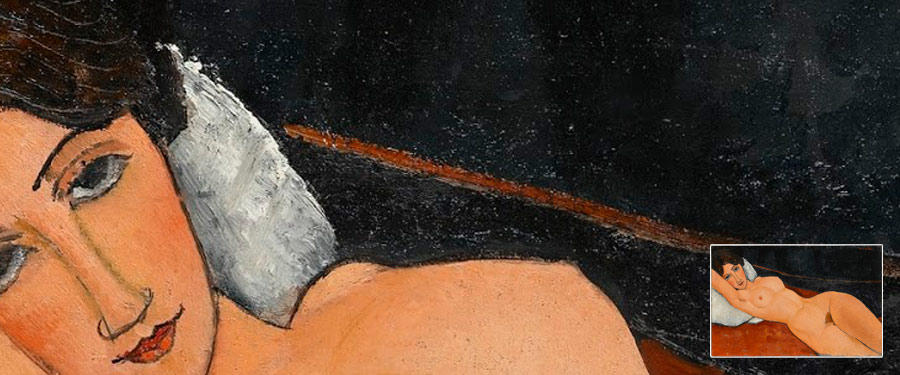 10.- Finally he put the canvas in the stretcher and the work is done. Probably the nail work was made in the gallery or the dealer house for easy transport, when Zborowsky went to England to sell he went there with a big roll of canvases and unrolled them to show the paintings. (But as always is not a law, many of his paintings were made in premade or even reused canvas) and this is where the magic of art creation ends. to read about his use of color click here |
||
If you have anything to add, contact me.